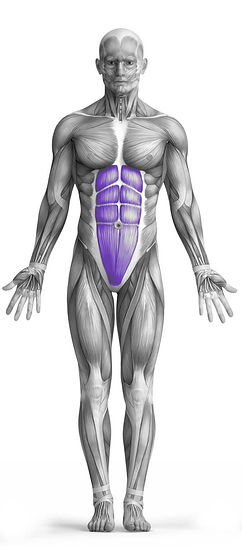Seated Knee Tucks 101 Video Tutorial
0

Exercise Synopsis
Target Muscle Group
Abs
Secondary Targets
None
Execution
Compound
Force Type
Pull
Required Equipment
Bodyweight
Fitness Level
Beginner
Variations
None
Alternatives
None
Timer
Hour
Minute
Second
Stopwatch
00:00:00:00
Overview
Seated Knee Tucks are an effective bodyweight exercise that primarily targets the abdominal muscles. To perform this exercise, sit on the floor with your legs extended in front of you and your hands placed behind your hips for support. From this position, bend your knees and bring them towards your chest, engaging your core throughout the movement. Slowly return your legs to the starting position, keeping control of the movement to maximize core activation. This exercise requires no equipment and is great for strengthening the abs while improving core stability.
How to Perform
Sit on a flat bench with your legs extended in front of you and your torso leaning back slightly. Position your body so that your buttocks are about a foot away from the edge of the bench for stability.
Place your hands on the bench beside your hips, gripping it firmly to help maintain balance during the movement.
Keep your knees and feet together as you lean back, ensuring your upper body remains slightly elevated with your shoulder blades off the bench. Your knees should be slightly bent.
In a controlled motion, pull your knees towards your chest while simultaneously curling your torso upward, engaging your core muscles. Aim to bring your knees as close to your chest as possible.
Slowly reverse the movement, extending your legs and torso back to the starting position, keeping your movements smooth and controlled.
Repeat the movement for the desired number of repetitions, focusing on using your abs to power the movement rather than relying on momentum.
★ Bonus: For exercises that involve external weights (such as dumbbells, barbells, or machines), the One Rep Max (1RM) calculator can help you estimate your maximum lifting capacity. Use it to track your strength progress and adjust your training for optimal results.
Tips
Complete this exercise with a slow and controlled pace to fully activate your core muscles.
For an added challenge, you can increase the intensity by holding a dumbbell between your feet while performing the movement.
How Not to Perform
Avoid Using Momentum: Do not rely on swinging your body or using fast, jerky movements to bring your knees in. Focus on slow, controlled motions to keep the emphasis on your abdominal muscles and avoid unnecessary strain on other parts of your body.
Do Not Overextend Your Back: Keep your back straight and avoid arching it excessively when returning to the starting position. This will prevent unnecessary pressure on your lower back and ensure that your core is doing the work.
Do Not Let Your Shoulder Blades Touch the Bench: Ensure your shoulder blades remain off the bench during the exercise to keep your core engaged. If your shoulders touch the bench, you’re likely losing the activation of your abs.
Avoid Lifting Your Feet Too High: Keep your feet close to the ground when you extend your legs back out. Lifting your feet too high can cause your lower back to round, leading to potential strain.
Do Not Hold Your Breath: Breathe steadily throughout the exercise. Holding your breath can increase pressure on your abdominal wall and make it harder to maintain control. Exhale when bringing your knees in and inhale as you extend your legs.
Do Not Rush the Movement: Take your time during both the contraction and extension phases. Rushing through the exercise can cause you to use momentum, reducing the effectiveness and potentially leading to injury.
Avoid Letting Your Knees Splay Out: Keep your knees and feet together throughout the movement. Letting them drift apart reduces the focus on your abs and can make the exercise less effective.
Variations
Variations of fitness exercises refer to different ways of performing a specific exercise or movement to target various muscle groups, intensities, or goals. These variations aim to challenge the body differently, prevent plateaus, and cater to individuals with varying fitness levels.
Alternatives
Alternative exercises in fitness refer to different movements or activities that target similar muscle groups or serve the same training purpose as the primary exercise. These alternative exercises can be used as substitutes when the original exercise is unavailable or challenging to perform due to various reasons such as equipment limitations, injuries, or personal preferences.








